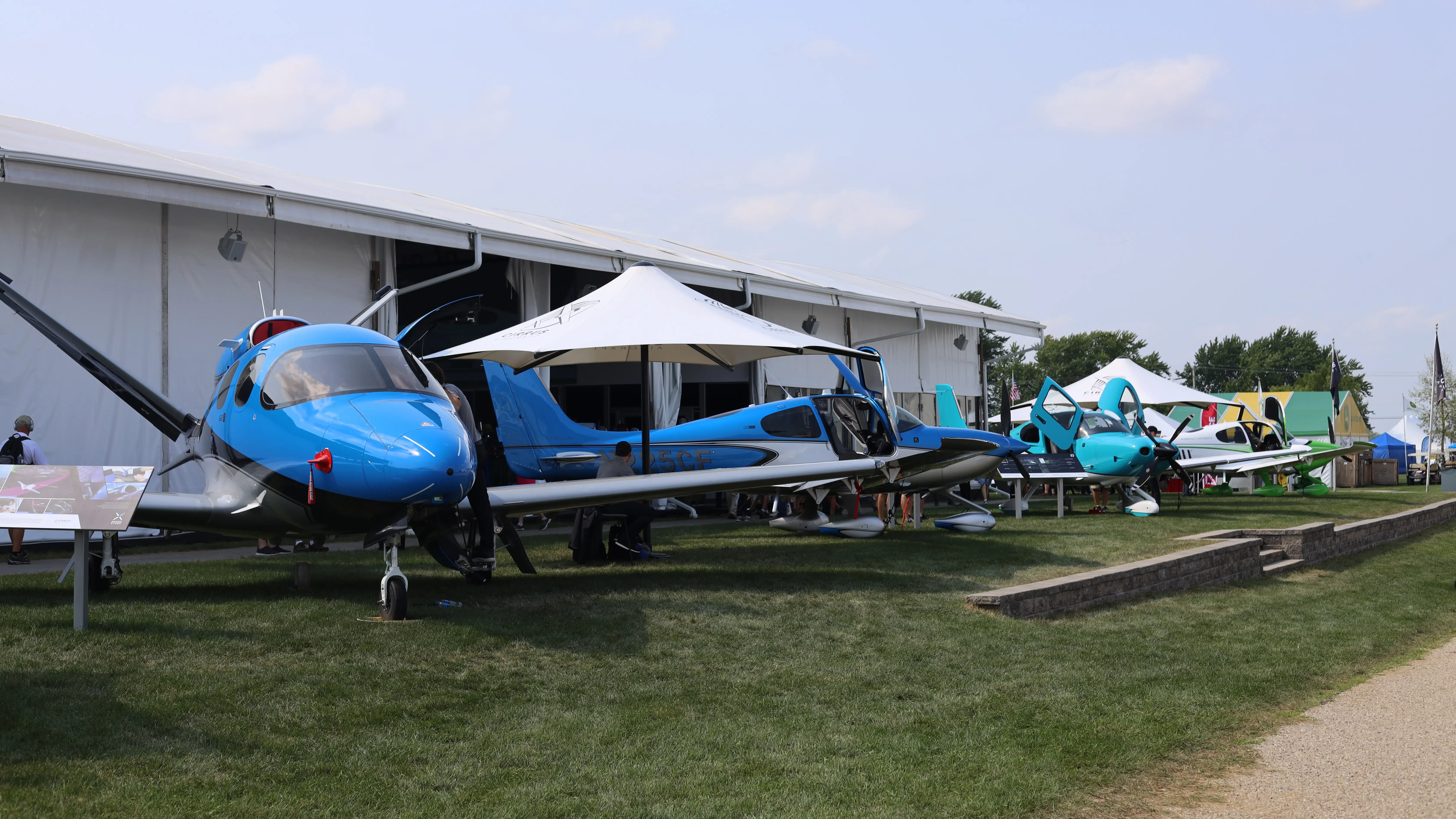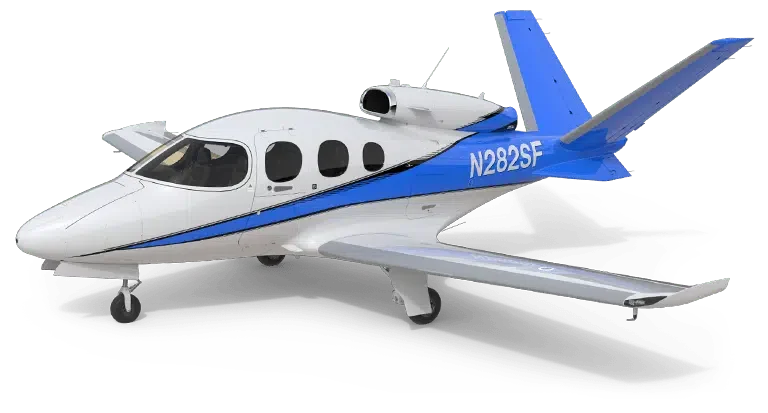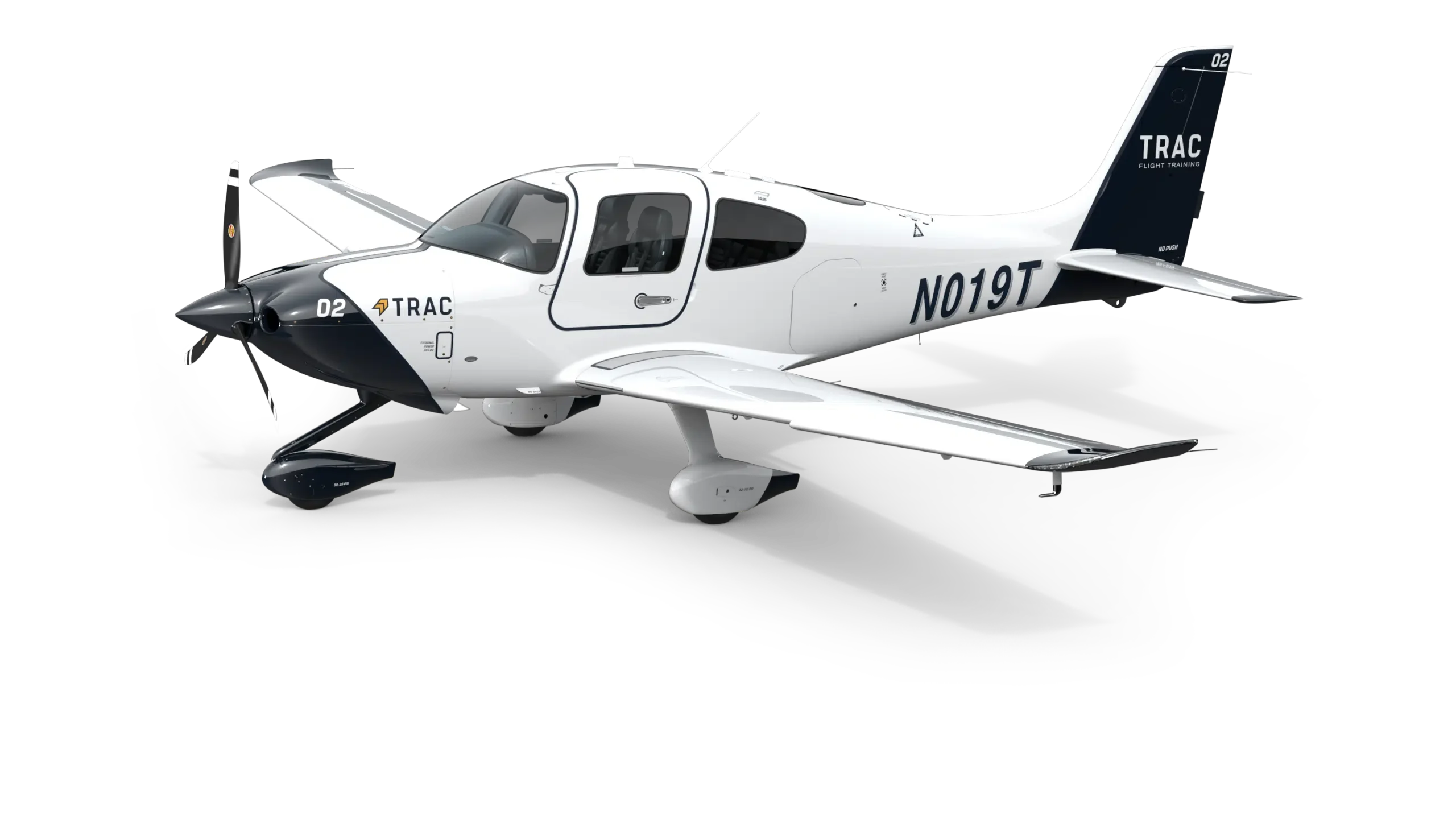
EAA AirVenture takes place every year in Oshkosh, Wisconsin and brings in more than half a million visitors and over 10,000 aircraft. And, of course, the best way to experience this week-long event is to fly in your Cirrus Aircraft. With pilots flying in from around the world, the final approach may sound challenging. But, with a little preparation and some first-hand knowledge, your experience will be smooth and enjoyable.
TOP TIPS FOR FLYING
Few understand the enjoyment and intricacies associated with AirVenture better than Jeff Coffey. The East Tennessee native has seen most everything in his 30 years of service as an air traffic controller at Knoxville, Tennessee’s McGee Tyson Airport (KTYS) and seven years as AirVenture ATC at Oshkosh, Wisconsin’s Wittman Regional Airport (KOSH). We caught up with Coffey for his Top Five Quick Tips for flying into one of the busiest airports in the world (at least for one magical week each July).
Tip 1: Study Ahead
Visit EAA.org/AirVenture. Read the notam and be sure that you understand the tips. And, don’t forget to bring your sign.
Tip 2: Be Ready
Before you start your arrival: complete your checklists, have your aircraft configured properly, load your frequencies, and brief your speeds and altitudes.
Tip 3: Watch for Traffic, Always
During AirVenture Oshkosh, you’re flying into one of the busiest airspaces in the world. Turn your lights on. Watch outside, and on your MFD and/or PFD (if equipped), for traffic. Get in line. Side-by-sides and over-unders don’t work. And, carry some speed to the runway.
Tip 4: Go Around
If the weather changes or traffic gets congested, expect a diversion. Carry some extra fuel, stay calm and be ready to go with the flow.
Tip 5: Be Safe
Know your limits. Don’t press a bad situation. Be safe out there and get ready to see more airplanes gathered together than any other day of the year – that’s right, get excited!
Here to offer additional advice is Thomas Klotz, Flight Training Developer at Cirrus Aircraft. With ten years of flying under his belt, Thomas has experienced this journey countless times over the years – both as a private pilot and Cirrus Aircraft corporate pilot. He offers some of his own wisdom to assist those who would like to join in the largest aviation gathering in the world.
What is a Notice to Airmen (NOTAM)?
If you want to fly to Oshkosh, the NOTAM is the essential playbook for what you will need to know, and you should have a copy onboard. Each year there are small important changes, so make sure to review it prior to departure.
Do I need to fill out any forms prior to arriving at Oshkosh?
No. However, you will need to print a parking sign and departure sign. Immediately after landing, place the parking sign on the pilot’s window so the ground crew can direct you to park and tie down your aircraft. Your departure sign will determine whether you are taking off via VFR or IFR. If you plan to operate IFR, be sure to read the NOTAM carefully (p. 24), as there are specific requests and clearances needed.
Having flown to Oshkosh multiple times, is there anything you would recommend?
Bring extra fuel if possible. There’s a lot going on in a small place so weather, parking, traffic or other variables may require you to stay in a holding pattern or re-route to a neighboring airport.
ARRIVAL
Being such a large event, are there any unique alterations on the radio frequency?
Yes. Because of the large number of aircraft trying to land, the communication is mainly one directional. Pilot chatter practically ceases upon arrival. Instead, your communication is primarily with ground control men, who spot each aircraft and call to the pilot to rock the aircraft’s wings in acknowledgement – a simple left and right action of your wings. The various radio frequencies for the event will be listed in the NOTAM.
Should you expect a holding pattern?
It is very possible that you will be asked to hold. While ground control makes every effort to bring planes in quickly, their foremost goal is safety. Aircraft may be placed in a holding pattern to account for landings and departures – ranging from a few short minutes to a decent amount of time. (Which is why extra fuel is important.)
What might be a challenge for the final approach?
A spot landing is not unusual at Oshkosh, so I would recommend practicing spot landings before your trip. The runway at Oshkosh will have a painted color scheme as well as various numbers, and ground control may direct you to land on a specific color or number. While it may require some practice, it’s a good challenge!
DEPARTURE
How can you get more information about departures while at Oshkosh?
Departure briefings occur daily, from 0700-1330 and 1630-1800, and provide an informal recap on safety, weather and other important items. These are held in the main Departure Briefing building, located east of the control tower (as well as other dedicated small briefing buildings). EAA staff in aircraft parking areas can also provide information and extra resources can be found on the website.
OUR PACKING LIST

You’ll be walking around all day looking at unbelievable airplanes, protect your eyes.

Stay hydrated and bring an insulated water bottle with you.

Summer in Wisconsin means potential rain, make sure to stay dry.

Keep the sun out of the way with a lightweight hat.

Sunscreen
You’ll be outside for most of the day, receive a sunscreen and chapstick complimentary gift with purchase from the Cirrus Store.
EAA AirVenture Oshkosh is a must see for all ages and we look forward to meeting you this year at the Cirrus Aircraft booth on Celebration Way.


